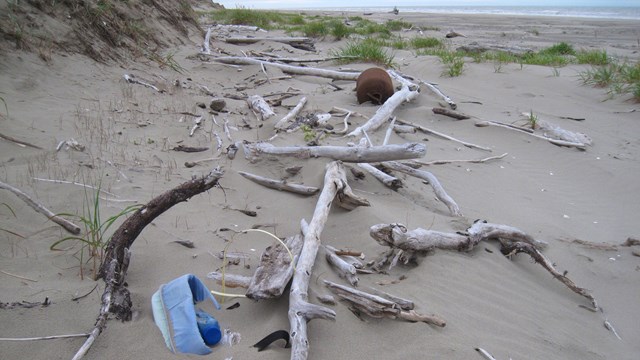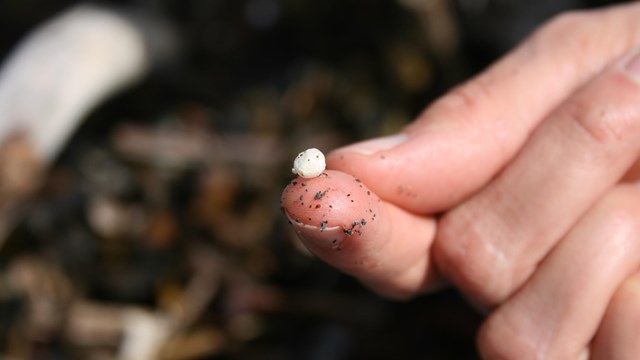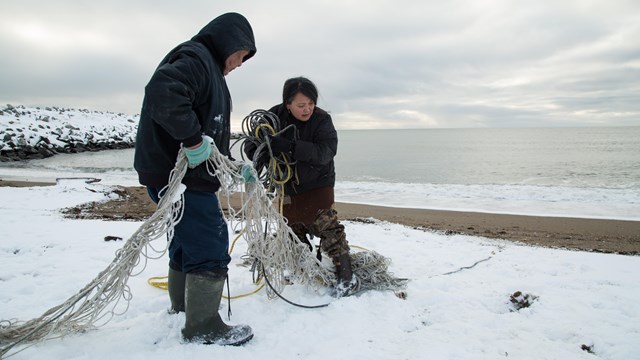
NPS Photo Small decisions make a BIG differenceStore your gearStore gear and equipment above the high tide line. This helps ensure items stay safe on land and do not wash out with the tide, get swept away in a storm surge, or travel out with ice when seasons change.Dispose of trash properlyMake sure items are put away that could be picked up by the wind or by animals and become debris. Contain waste by bagging it and throwing it away in a secure trash bin.Consider reusable over disposableBring reusable bags or choose boxes instead of plastic bags for groceries. Purchase items in recyclable packaging and take advantage of your community's recycling programs, if available.Rethink and repurposeCoffee cans can be transformed into planters, cardboard boxes into cutting boards to fillet fish, and fishing buoys into artwork. Get creative! Many items can be given a second life. 
NPS Photo How can I help in my community?Participate in a community cleanupWe can prevent marine debris by picking up trash from streets, along riverbanks, streams, and beaches. Connect with an organization near you to join, or start your own cleanup. Communities around the Bering Strait Region typically have spring and fall cleanups.Discuss the issue in your classroom, home, and communityTalk about where debris can come from, how it gets to the ocean, and find solutions together that fit your community.Report debris sightings in your communityIf you live in the Bering Strait Region, connect with the local Alaska Sea Grant office, Kawerak's Marine Program, or other local observation networks.

NPS Photo / Janet Bering How can I get involved with research?Share Knowledge!The Local Environmental Observer (LEO) Network shares knowledge about unusual animal, environmental, and weather events across the Arctic and beyond. This helps raise awareness and understanding of our changing world. Submit observations about significant environmental events (marine debris-related and otherwise) where you live. Connect at leonetwork.org (you will be directed to a non-NPS site).Share Data!The Marine Debris Tracker App is designed to help you make a difference by sharing data on trash and debris collected in your community. Contribute to scientific research, from anywhere around the globe. Connect at debristracker.org (you will be directed to a non-NPS site).Take a Walk!The Coastal Observation and Seabird Survey Team (COASST) believes coastal communities and people are essential scientific partners in monitoring marine ecosystem health. Coastal residents walk the beach monthly to collect data on stranded birds, marine debris, and human use. These observations help build a picture of what's normal and what's not. Connect at coasst.org (you will be directed to a non-NPS site).Want more information?Explore NOAA's Marine Debris ProgramExplore more about impacts of marine debris in this region:
Marine Debris
One big ocean, one big issue. 
Tiny Pieces, Big Impact
How do microplastics affect marine environments? 
Ocean Health is Our Health
How does marine debris affect habitats, animals, and people? |
Last updated: October 6, 2023
